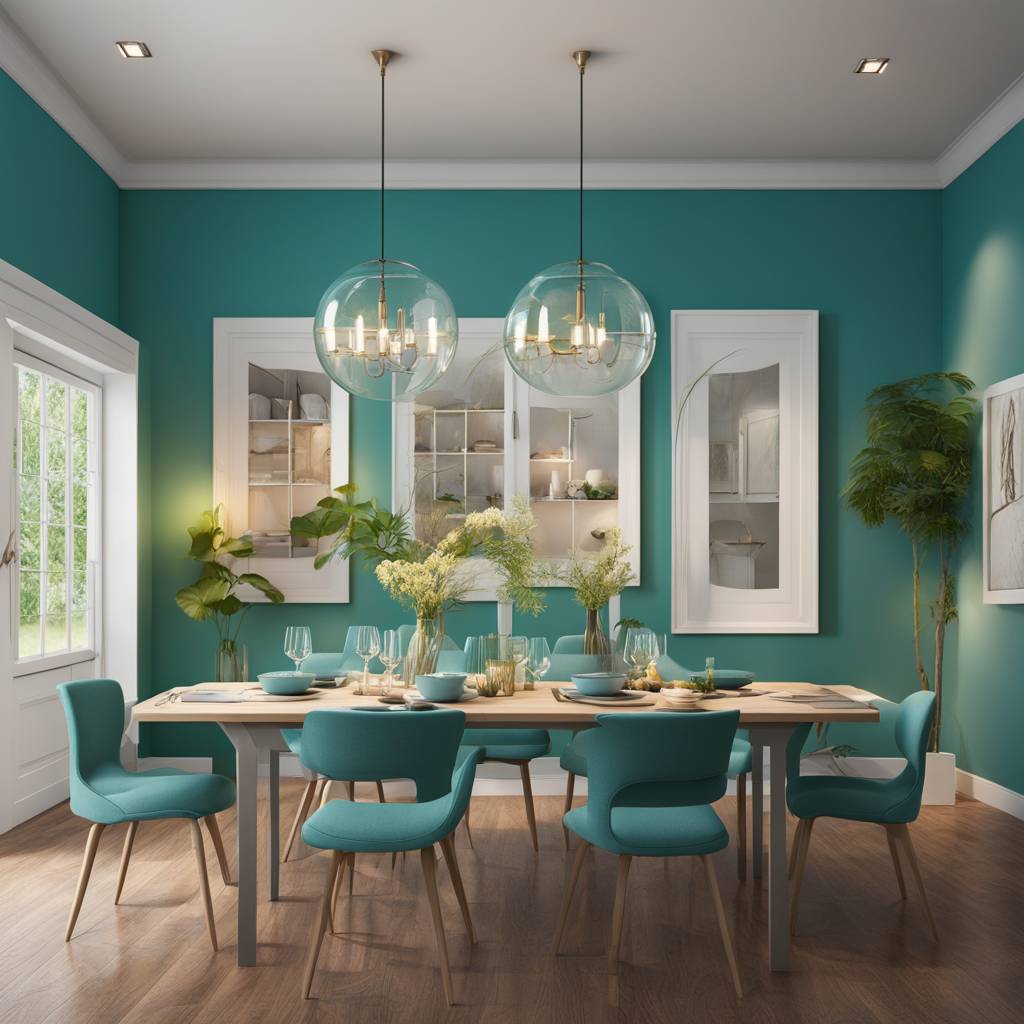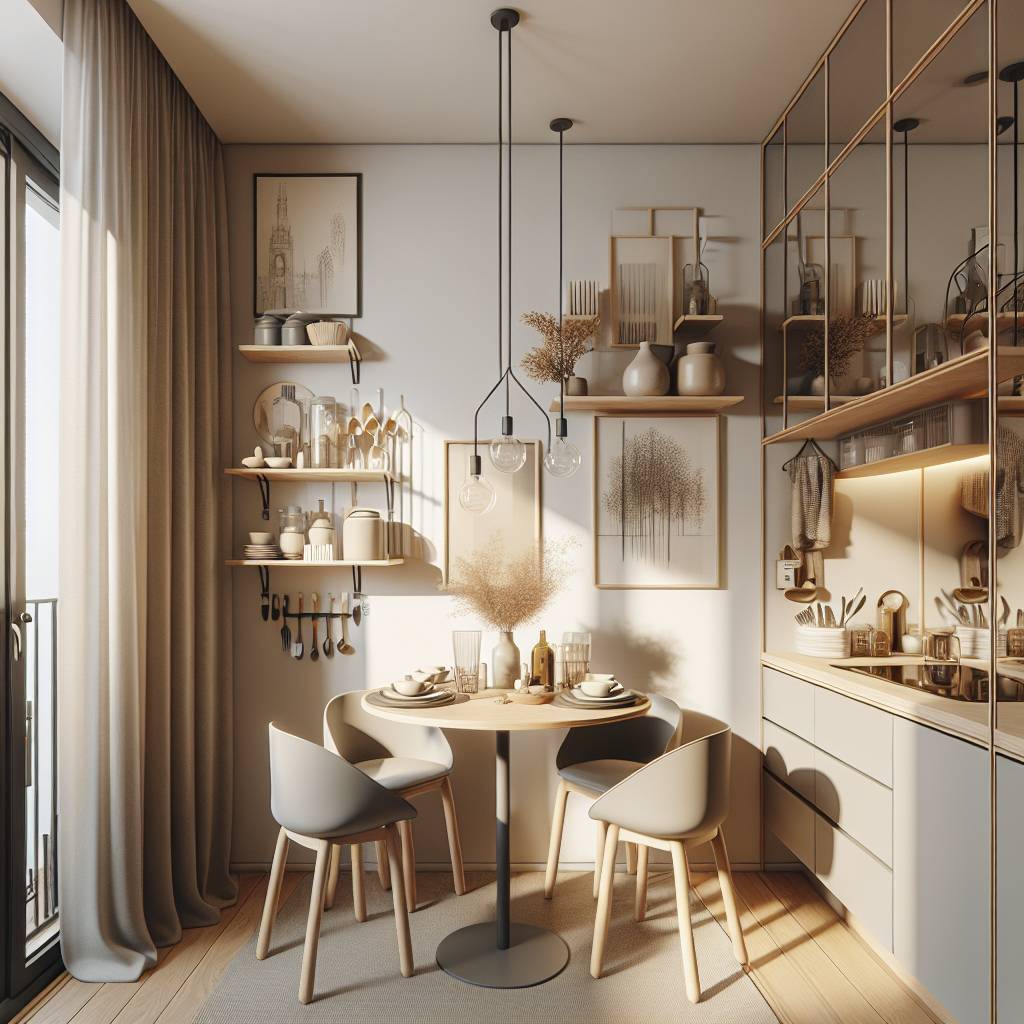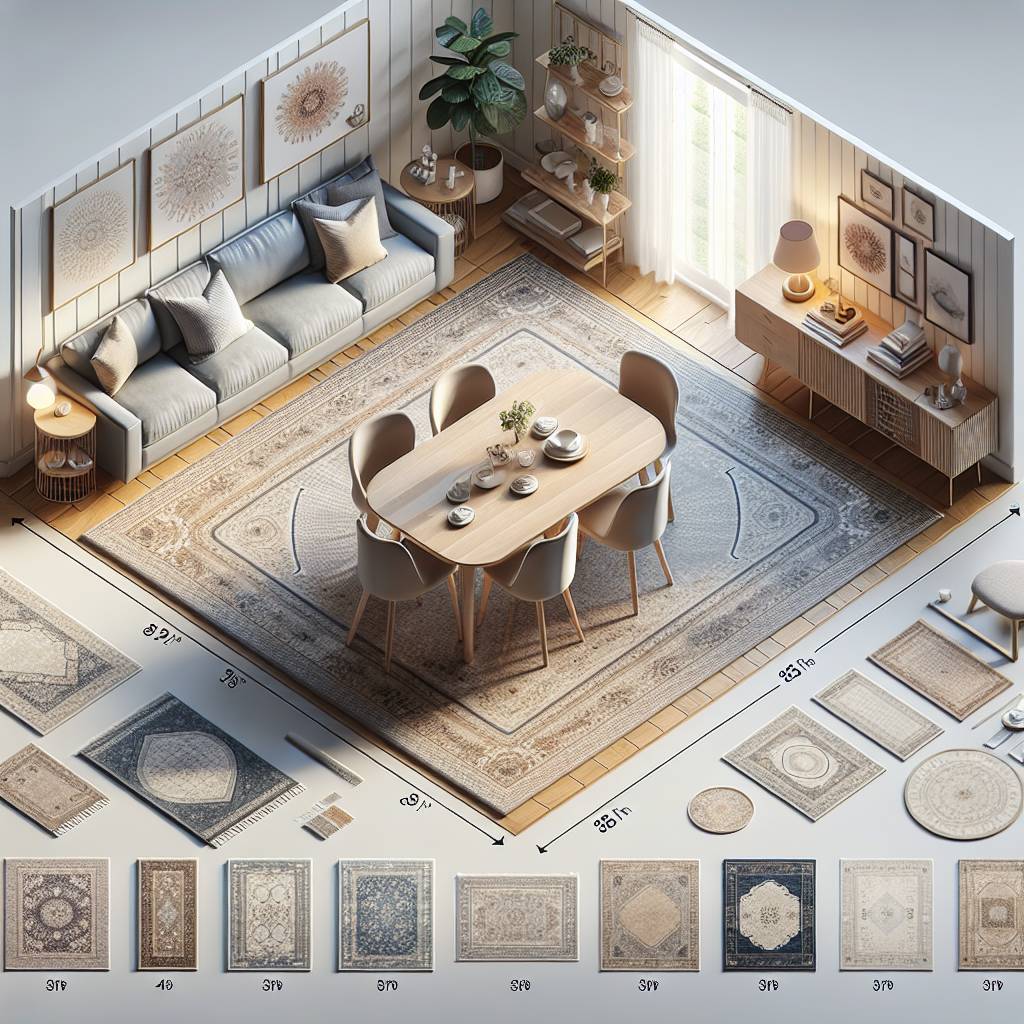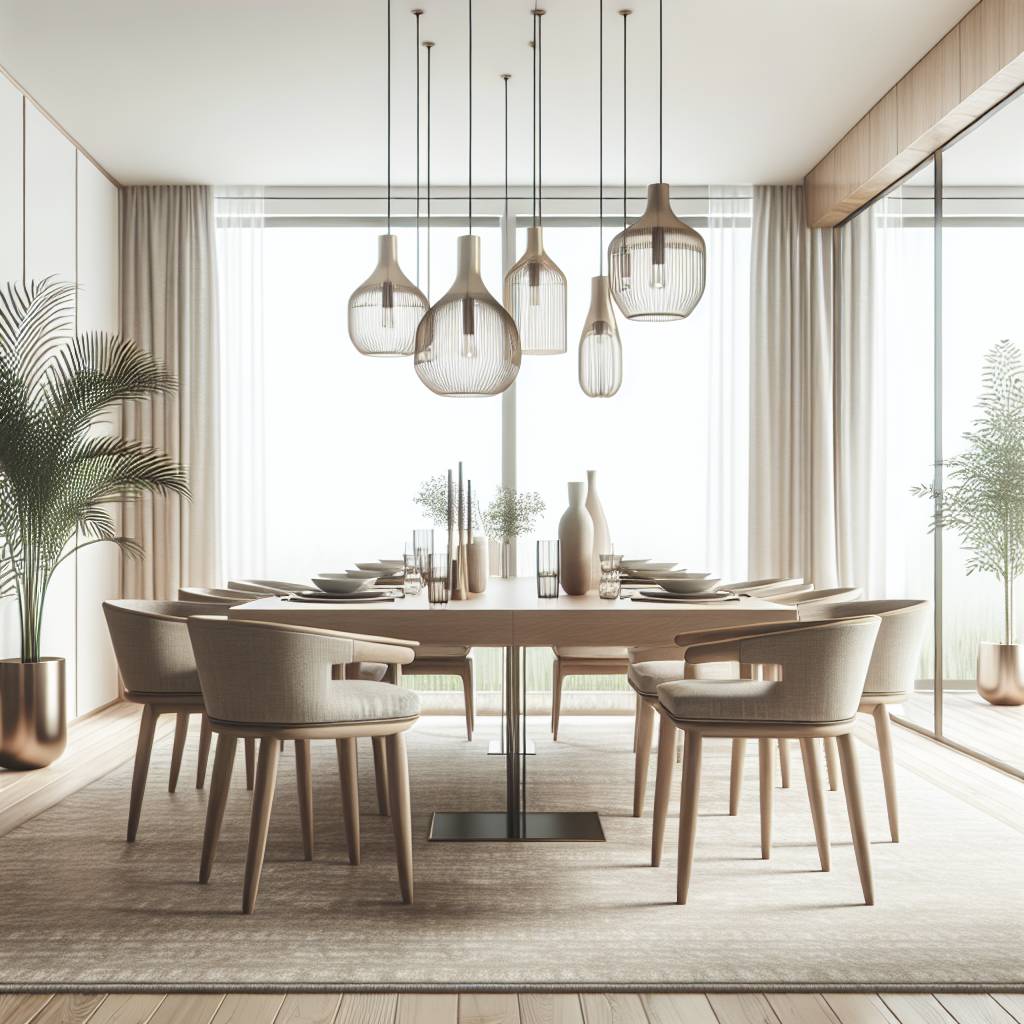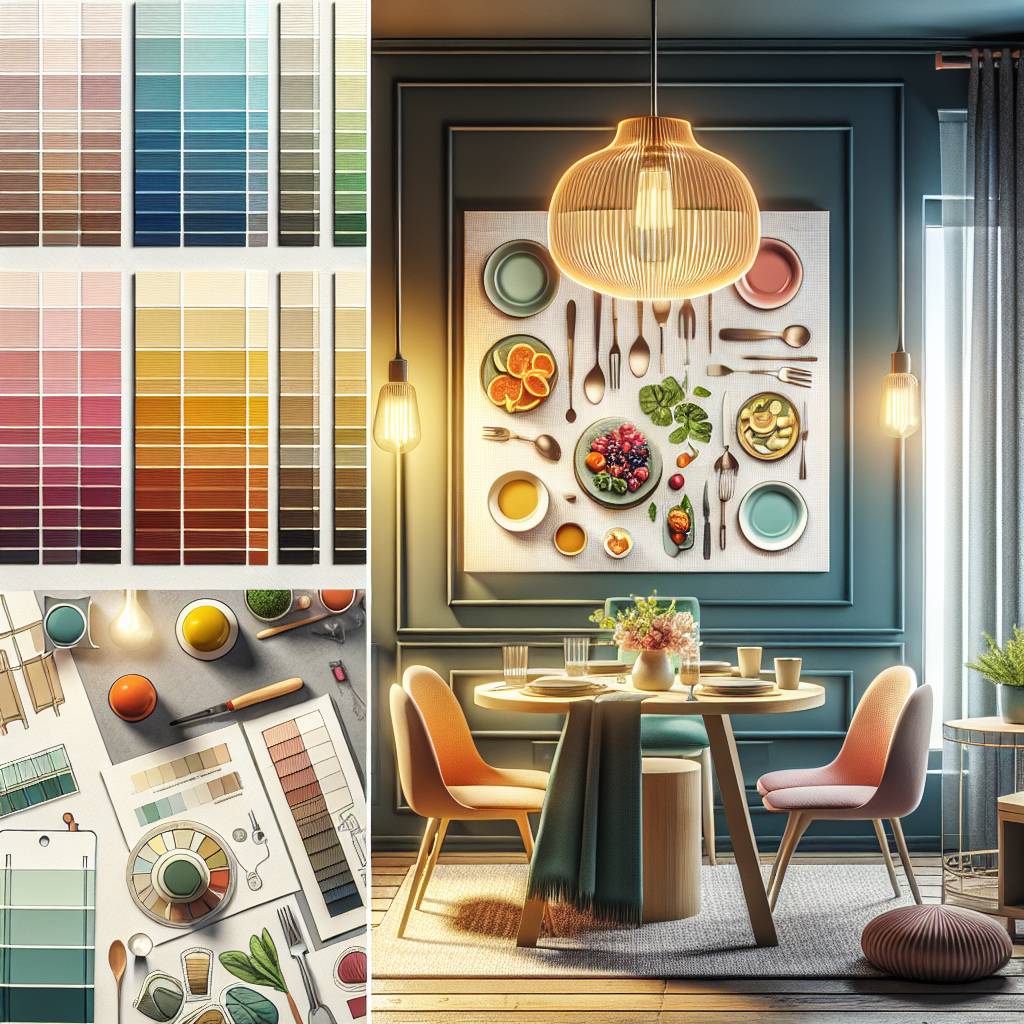Did you know that lighting accounts for about 10% of a household’s energy bill?Choosing the right lighting not only enhances the ambiance but can also significantly impact your energy consumption. Selecting energy-efficient dining room lights with dimmable options is a smart choice, both for the environment and your wallet.
Energy efficiency doesn’t mean compromising on style or brightness. By understanding different types of bulbs, fixtures, and design considerations, you can create an inviting atmosphere while minimizing electricity usage. Let’s delve into how you can strike the perfect balance between aesthetics, energy efficiency, and brightness level in your dining room lighting choices.
Key Takeaways
- Choose energy-efficient LED or CFL lights to save on energy costs and reduce environmental impact.
- Select the right size fixture and consider layering lighting to create a well-lit and inviting dining space.
- Opt for dimmers to control light intensity and save energy, while also matching fixtures to the shape of the dining table for a balanced look.
- Coordinate lighting with the dining room decor to enhance the overall aesthetic and ensure proper arrangement and positioning for optimal functionality.
- Prioritize energy-efficient bulb selection and determine fixture height based on the size and layout of the dining room for effective illumination.
- By following these steps, you can create a well-lit, energy-efficient dining room that complements your lifestyle and contributes to a sustainable environment.
Significance of Energy-Efficient Lighting
Choosing energy-efficient dining room lights with the right wattage and brightness level is crucial as it significantly impacts the dining experience. Proper lighting not only illuminates the space but also creates a welcoming and comfortable atmosphere for diners. Imagine enjoying a meal under harsh, flickering lights versus soft, warm illumination; the difference is palpable. The right lighting can make or break the ambiance of a dining area.
In addition to setting the mood, energy-efficient dining room lights also play a pivotal role in highlighting the aesthetics of the space. Whether it’s an elegant chandelier above a formal dining table or subtle pendant lights over a cozy breakfast nook, proper lighting enhances the visual appeal of any dining area. It draws attention to architectural features, decor elements, and even culinary creations on display.
Types of Energy-Efficient Lights
LED Options
LED lights are a fantastic choice when considering energy-efficient dining room lights with low wattage. These lights use significantly less energy than traditional incandescent bulbs, making them an excellent eco-friendly option for your home. LED lights have an impressively long lifespan, so you won’t need to replace them as often as other types of bulbs. This not only saves you money in the long run but also reduces waste.
Furthermore, LED lights emit very little heat compared to other lighting options, which can be particularly beneficial in a dining room where comfort is crucial. LED lights offer diverse options for color temperature, brightness, and wattage. This means that you can easily create the perfect ambiance for any occasion, whether it’s a bright setting for family dinners or a softer glow for intimate gatherings.
CFL Bulbs
CFLs with the right wattage are another great option if you’re looking to choose energy-efficient dining room lights. These bulbs are designed to be energy-saving alternatives to traditional incandescent bulbs while providing ample illumination for your dining space. One significant advantage of CFLs is their cost-effectiveness; they consume much less energy and last longer than incandescent bulbs, ultimately saving you money on your electricity bill and replacement costs.
Moreover, CFLs are suitable for both ambient and task lighting in the dining room. Whether you need bright light over the table for meal preparation or softer lighting around the room during dinner parties, CFLs can meet these requirements effectively without compromising on energy efficiency.
Halogen Incandescents
Halogen incandescents provide bright white light that’s ideal for illuminating dining spaces with clarity and warmth. If creating an inviting atmosphere in your dining area is essential to you, then halogen incandescents could be an excellent choice due to their ability to enhance colors and details within the space. Many halogen incandescent options come with dimmable features that allow precise control over the level of brightness—perfect when adjusting lighting according to different occasions such as casual family meals or formal dinner parties. Compared with traditional incandescent bulbs, halogen versions offer improved energy efficiency without sacrificing quality or ambiance.
Selecting the Right Size Fixture
Proportion to Table
When choosing energy-efficient dining room lights, it’s crucial to consider the proportion of the fixture to the table. The lighting should complement the size of the dining table, enhancing both visual appeal and functionality. For example, a small pendant light over a large dining table might look disproportionate and fail to provide adequate illumination for the entire space. Therefore, it’s essential to ensure that the scale and balance of the lighting fixture are suitable for the size of your dining area.
Proper proportion can significantly impact how well your energy-efficient light illuminates your dining space. A well-sized chandelier or pendant light not only provides sufficient brightness but also adds an aesthetic touch to your room. Imagine a large chandelier in a spacious dining area; its grandeur can elevate the overall ambiance while efficiently providing ample illumination for various activities such as meals, homework sessions, or even game nights.
Room Dimensions
Another critical factor when selecting energy-efficient dining room lights is considering your room’s dimensions and layout. Your lighting choices should align with these aspects to ensure even distribution throughout the space without overpowering or underwhelming it with light. For instance, in larger rooms, multiple fixtures or those with higher lumen output and light bulb wattage may be necessary to achieve balanced illumination across all areas.
Layering Dining Room Lighting
Ambient Light
Dining room lighting should include ambient light, which provides soft, diffused illumination for the overall space. This type of lighting sets the mood and creates a cozy atmosphere in dining areas. You can achieve ambient light through pendant lights or chandeliers that hang from the ceiling.
For example, if you have a large dining table, consider installing a statement chandelier to provide ample ambient light while also making an aesthetic impact on the room’s decor. Pendant lights with dimmer switches can offer versatility by allowing you to adjust the brightness according to different occasions.
Task Lighting
In addition to ambient lighting, it’s essential to incorporate task lighting into your dining area. Task lighting offers direct and focused illumination for specific activities such as dining or reading at the table. This enhances functionality during meal times and ensures that everyone can see their food clearly without any harsh glare.
Adjustable pendant lights or wall sconces are excellent choices for providing task lighting in a dining room. These fixtures allow you to customize the direction and intensity of the light based on your specific needs during different meals or activities.
Accent Fixtures
Another crucial aspect of dining room lighting is accent fixtures, which are designed to highlight specific features like artwork or architectural elements within the space. By incorporating accent lighting, you can add depth and visual interest to your dining area while drawing attention to particular design elements.
Track lighting or recessed spotlights are popular options for accentuating artwork or decorative pieces displayed in your dining room. These fixtures not only contribute to creating an inviting ambiance but also serve as decorative enhancements themselves when strategically positioned around key focal points in the space.
Energy-Efficient Bulb Selection
Lumens vs Watts
When choosing energy-efficient bulbs, it’s crucial to understand the difference between lumens and watts. Lumens measure brightness, while watts indicate energy usage. To select efficient bulbs, focus on lumens rather than watts. For instance, a 10-watt LED bulb can produce the same amount of light as a 60-watt incandescent bulb, making it more energy-efficient.
Higher lumens provide brighter light with less energy consumption. For example, a 1600-lumen LED bulb uses only 15 watts, whereas an incandescent bulb would require around 100 watts to achieve similar brightness. Therefore, when aiming for energy efficiency in your dining room lighting, prioritize higher lumen output over lower wattage.
Color Temperature
Consider the color temperature of the bulbs to set the desired atmosphere in your dining room. Warm white lights ranging from 2700K to 3000K create a cozy ambiance suitable for intimate family dinners or gatherings with friends. On the other hand, cool white lights within the range of 3500K to 4100K are ideal for modern and minimalist settings where a bright and refreshing atmosphere is preferred.
Utilizing Dimmers for Efficiency
Energy Savings
Energy-efficient lighting is crucial in reducing electricity consumption. LED bulbs are a prime example of this, as they consume significantly less power than traditional options. By opting for energy-efficient lighting, you can achieve long-term cost savings due to reduced energy usage.
Switching to dimmable light bulbs and utilizing dimmers can contribute to significant energy savings. When the lights are dimmed, they consume less electricity, leading to reduced energy bills over time. This not only benefits the environment but also your wallet.
Dimmable options offer flexibility in creating different atmospheres within your dining room. The ability to adjust the light bulb wattage allows you to set the mood and ambiance according to various occasions or times of day. For instance, brighter lighting may be suitable for family dinners or cleaning up after meals, while softer, dimmer lighting can create a cozy atmosphere during intimate gatherings or romantic dinners.
Mood Setting
The influence of lighting on the mood and ambiance of a dining area should not be underestimated. The right kind of lighting can transform an ordinary meal into a memorable dining experience. With dimmable light bulb options and dimmers, you have complete control over setting the perfect mood for any occasion.
Choosing appropriate lighting that complements your desired dining experience is essential when designing an efficient yet inviting space. For instance, if you enjoy hosting dinner parties with friends or family gatherings, consider installing adjustable pendant lights with dimmers above the dining table. This way, you can easily transition from bright task-oriented illumination during meal preparation to softer ambient light during dinner conversations.
Matching Fixtures to Table Shape
Round Tables
A centralized pendant or chandelier is an ideal choice. These fixtures provide even light distribution across the table, ensuring that every diner has sufficient illumination. It’s crucial to consider the size and light bulb wattage of the fixture in relation to the dimensions of the table. For instance, a small pendant might get lost over a large round dining table, while an oversized chandelier could overwhelm a smaller one.
Opting for fixtures that offer uniform light coverage across the entire surface of the round table is essential. This ensures that all areas are well-lit and creates an inviting ambiance for dining and socializing. Considering energy-efficient options like LED bulbs can further enhance sustainability without compromising on brightness.
For example:
- A 36-inch diameter round dining table would pair nicely with a 24-inch diameter pendant light.
- LED candelabra bulbs can be used in chandeliers for energy efficiency without sacrificing style.
Rectangular Tables
Rectangular tables call for linear fixtures such as linear suspension lights. These are designed to complement the elongated shape of rectangular tables by providing adequate coverage along their length. Ensuring proper illumination across the entire surface area of the table is crucial when selecting these fixtures.
The aim should be to choose lighting solutions that not only match but also enhance the aesthetics of your dining space. The size and scale of your chosen fixture must harmonize with those of your rectangular dining table while effectively illuminating its entirety evenly.
For instance:
- A 72-inch long rectangular dining table may benefit from two linear suspension lights spaced evenly above it.
- Energy-efficient fluorescent tubes within linear suspension lights can help reduce electricity consumption significantly.
Determining Fixture Height
Table Clearance
When choosing energy-efficient dining room lights, it’s crucial to consider the hanging height to avoid obstructing views or movement. Adequate clearance between the table and fixture is essential for both functionality and aesthetics. For example, a chandelier that hangs too low can hinder eye contact during meals or even pose a physical obstacle in the room.
Adjusting hanging heights based on ceiling height and personal preference is key. A general rule of thumb is to hang fixtures about 30-34 inches above the table surface for an 8-foot ceiling, adjusting by an inch or two for each additional foot of ceiling height. This ensures proper illumination without overwhelming the space.
Ceiling Height Consideration
For spaces with high ceilings, larger and more prominent fixtures are often preferred as they fill the vertical space effectively while making a striking visual statement. However, it’s important to maintain balance within the room; oversized fixtures in small dining areas can feel overwhelming.
On the other hand, low ceilings benefit from flush mount or semi-flush mount fixtures that provide adequate illumination without encroaching on precious overhead space. These types of energy-efficient lighting options offer practicality without sacrificing style in rooms with limited vertical clearance.
Coordinating with Dining Room Decor
Style Consistency
When choosing energy-efficient dining room lights, it’s crucial to consider the overall interior design style. The lighting should align with the existing decor to create a cohesive and harmonious dining space. For instance, if your dining room features a modern aesthetic, sleek and minimalist light fixtures would be an excellent choice. On the other hand, traditional or rustic decor may call for chandeliers or pendant lights with ornate details.
Consistent style in lighting choices helps in creating a balanced and visually appealing atmosphere within the dining area. Imagine having an intricately designed chandelier hanging above a sleek and modern dining table – this mismatch can disrupt the overall visual appeal of the space.
Color Schemes
Another essential factor to consider when selecting dining room lights is how their color complements the room’s palette. Warm tones such as reds, yellows, or oranges pair well with warm white lighting options. These warmer hues create a cozy and inviting ambiance for family dinners or entertaining guests.
On the other hand, cool tones like blues, greens, or purples are best complemented by cool white lighting options. These cooler hues are often associated with calmness and relaxation; thus, pairing them with suitable lighting enhances these desired effects within the dining area.
Ensuring that your chosen light fixture is centered above your dining room table is vital for both practicality and aesthetics. Proper alignment creates balance while enhancing visual appeal during meals or gatherings around the table.
Balanced placement of lighting fixtures directly above the center of your table contributes to symmetry within your dining space – something that can greatly impact its overall look and feel positively.
Arrangement and Positioning Tips
Centering Above Table
Centering the fixture above the table is crucial. This ensures optimal illumination across the entire dining area, creating a welcoming ambiance for meals. By positioning the light centrally, you can avoid glare or dark spots, providing even light distribution throughout the space.
To achieve uniform brightness, it’s essential to select fixtures that disperse light evenly. Consider pendant lights or chandeliers with multiple bulbs or diffusers to ensure consistent illumination without harsh shadows. These fixtures not only provide adequate lighting but also contribute to an aesthetically pleasing dining room environment.
Even Light Distribution
In choosing energy-efficient dining room lights, it’s vital to consider various factors such as room dimensions, types of lighting, and desired ambiance. When looking for recommendations, prioritize LED bulbs due to their energy efficiency and longevity. Dimmer switches offer flexibility in adjusting light levels based on different occasions and moods.
Summary
Congratulations on reaching the end of our guide to choosing energy-efficient dining room lights! By now, you’ve gained valuable insights into the significance of energy-efficient lighting and learned about the various types of lights suitable for your dining space. You’ve also discovered essential tips for selecting the right size fixture, utilizing dimmers for efficiency, and coordinating with your dining room decor to create a well-lit and inviting ambiance. With these practical strategies at your disposal, you’re well-equipped to make informed decisions when upgrading your dining room lighting.
Now, armed with this knowledge, it’s time to take action. Evaluate your current dining room lighting setup, consider the tips provided, and make the necessary adjustments to enhance both the energy efficiency and aesthetic appeal of your space. Remember, small changes can make a significant impact not only on your electricity bills but also on the overall atmosphere of your dining area. Here’s to creating a beautifully lit dining space that reflects both your style and environmental consciousness!
Frequently Asked Questions
How can energy-efficient dining room lights benefit me?
Energy-efficient dining room lights can significantly reduce your electricity bills while also contributing to environmental conservation. By choosing the right fixtures and bulbs, you’ll create a well-lit and inviting space for meals without compromising on style or functionality.
What are the different types of energy-efficient lights suitable for a dining room?
LED, CFL, and halogen lights are popular choices for energy-efficient dining room lighting. Each type has its unique advantages in terms of energy efficiency, longevity, and light quality. Consider factors such as brightness, color temperature, and dimmability when making your selection.
How do I determine the right size fixture for my dining room?
To find the ideal fixture size for your dining area, consider the dimensions of the room and table. A general rule is to choose a fixture that is about half to three-quarters of the table’s width. This ensures balanced illumination across the entire tabletop without overwhelming or underwhelming the space.
Can I mix different types of lighting in my dining room for better energy efficiency?
Absolutely! Layering different sources of light such as ambient, task, and accent lighting not only enhances visual appeal but also allows you to customize illumination levels based on specific needs. By using dimmers with various light sources, you can further optimize energy usage.
How do I select an appropriate bulb for my energy-efficient dining room lighting?
When choosing bulbs for your fixtures, look for LED options with high lumens per watt (lm/W) ratings. These will provide ample brightness while consuming minimal power. Consider color rendering index (CRI) values to ensure accurate color representation in your dining space.
